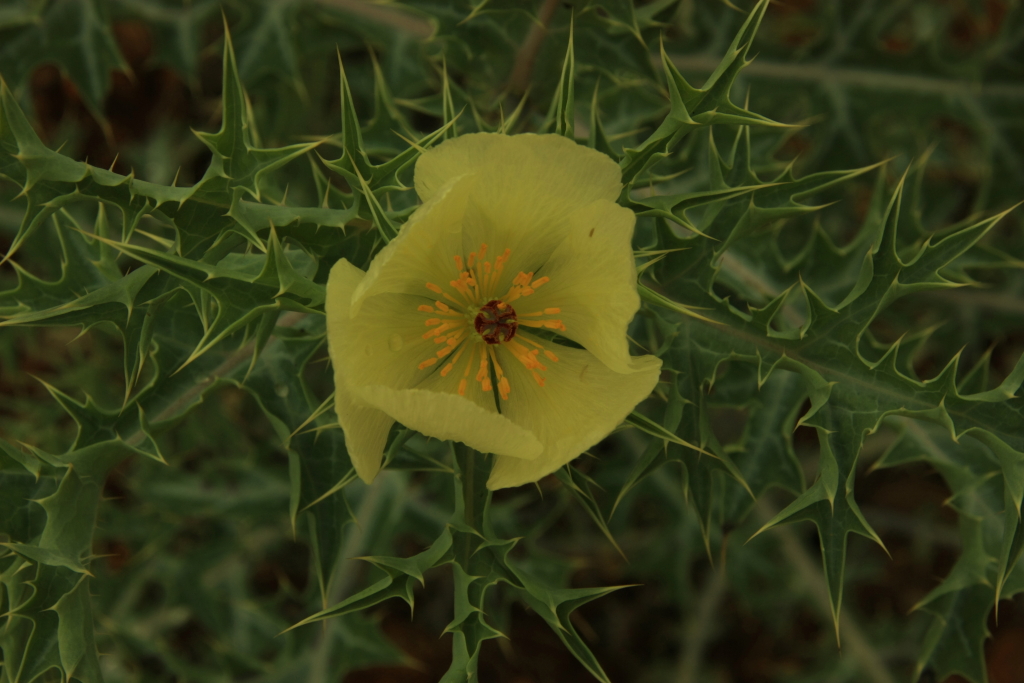Argemone ochroleuca subsp. ochroleuca
Mexican PoppyStout-taprooted annual (or ?biennial) herb or shrub to c. 1 m high. Leaves pinnatifid, ± rosetted and petiolate at base of plant, alternate and sessile above; lamina to c. 20 cm long, 5 cm wide, glaucous, often whitish along main veins, deeply divided into several broadly toothed lobes, the teeth terminated by yellowish spines to c. 5 mm long. Sepals 3, overlapping, ovate, 15–20 mm long (including terminal spine to c. 8 mm long) with c. 8 spines on back; petals 6, obovate or cuneate, 25–35 cm long, pale yellow, soon deciduous; stamens c. 30–50; stigmas 4–6, 2–3 mm long, purple. Capsule ellipsoid or ovoid, 3–5 cm long, each valve with c. 20 spines; seeds numerous, globoid, c. 2 mm diam., reticulate-pitted. Flowers Sep.–Jan.
VRiv, GipP, EGU. Native to Mexico. In Victoria known with certainty only from the vicinity of the Snowy River near Orbost and the boarder with New South Wales where an occasional weed of the sandy riparian zone, Barnawatha near Wondonga, and a 1982 collection from suburban Surrey Hills (where doubtfully naturalised).
Early scattered records attributed to A. mexicana (e.g. Beaufort, Sunbury, Albury districts) are not represented by specimens at MEL.
Walsh, N.G. (1996). Argemone. In: Walsh, N.G.; Entwisle, T.J., Flora of Victoria Vol. 3, Dicotyledons Winteraceae to Myrtaceae, pp. 69–69. Inkata Press, Melbourne.
 Spinning
Spinning


